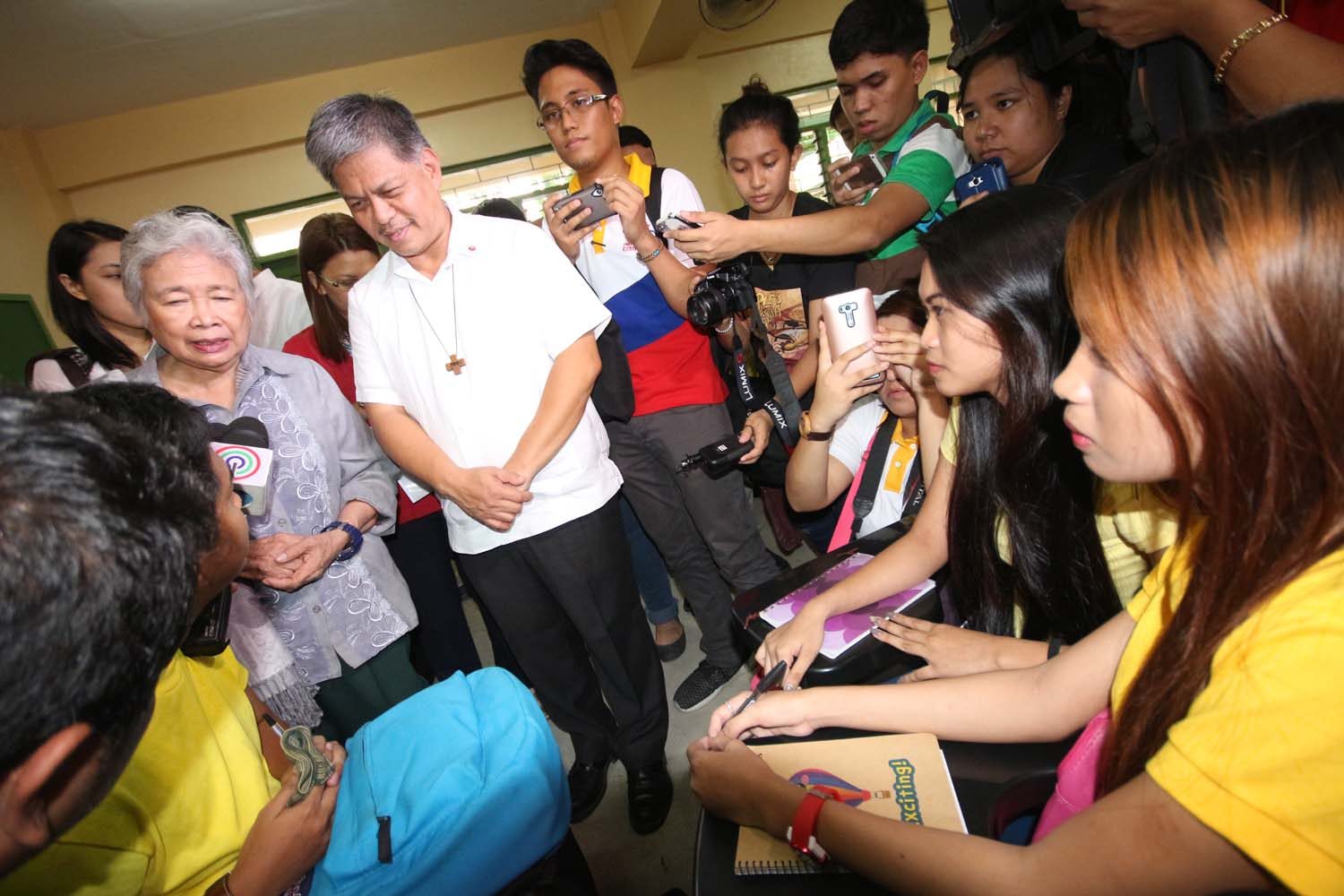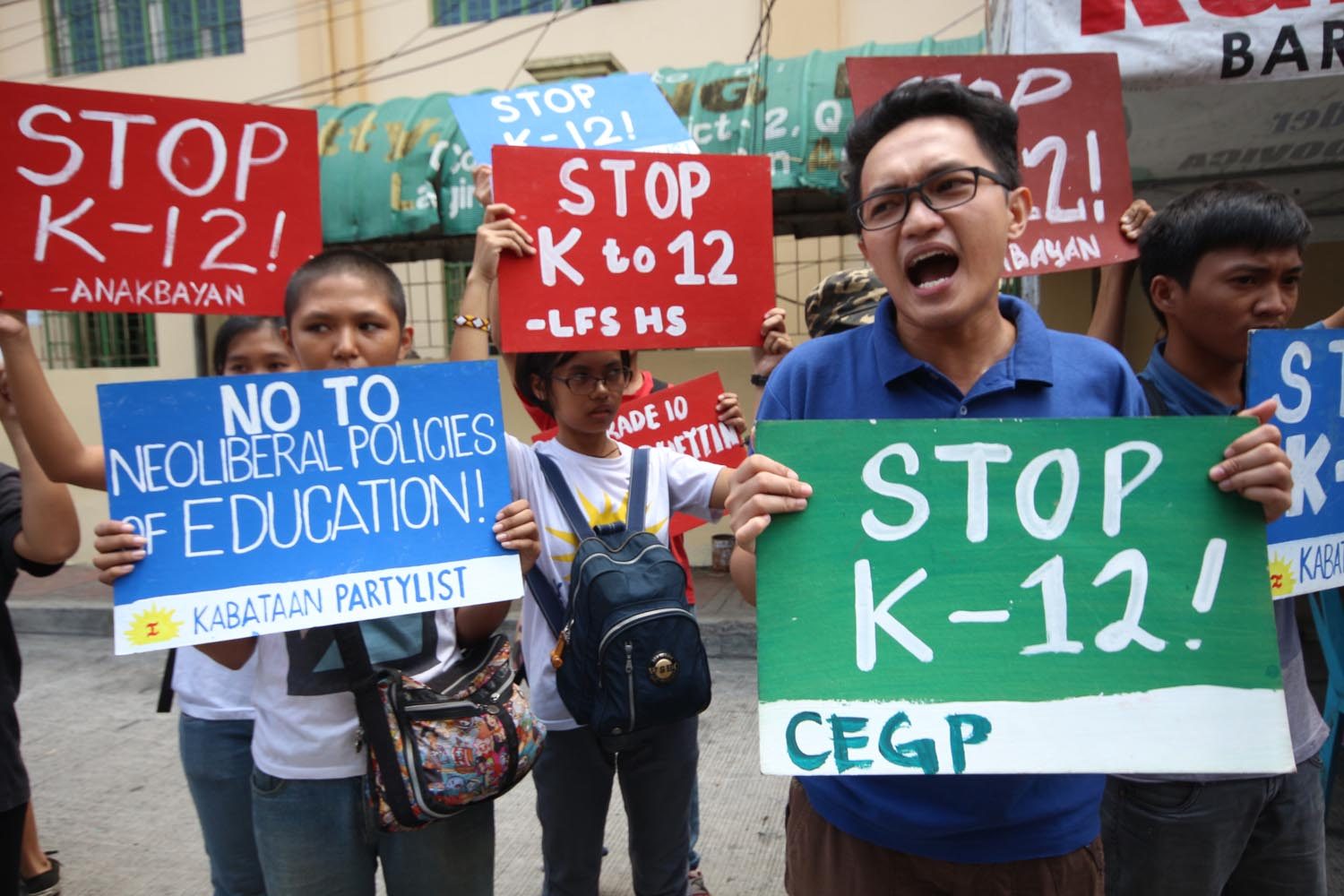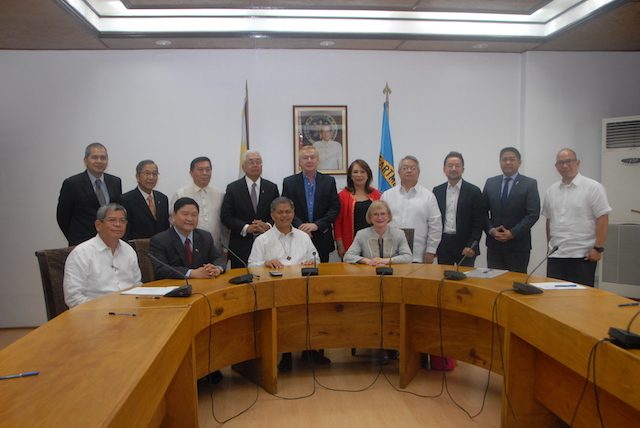SUMMARY
This is AI generated summarization, which may have errors. For context, always refer to the full article.

MANILA, Philippines – There was a collective sigh of relief from educators when President Rodrigo Duterte, a month before assuming office in 2016, decided to support the K to 12 program. They believed the education reform was long overdue.
But during his 100-minute-long State of the Nation Address in July 2016, there was no mention of the K to 12 program – a landmark legislation that was almost a staple in former President Benigno Aquino III’s SONAs.
Instead, what Duterte announced was a two-liner on education priorities for his first year in office: increased spending on basic education, mandatory education on the evils of drugs, and the Alternative Learning System.
Under the Duterte administration, people no longer talked as much about the controversial K to 12 program. Former Education Secretary Armin Luistro suspects it’s because the final push to stop the program before the Supreme Court (SC) did not succeed.
“You need to kind of shake at the very foundation of the house now to tear it down, so it’s almost like, it’s a done deal, and I think whatever legal remedies they’re waiting for, in my mind, I suppose the Court will say it’s moot and academic because it’s already ongoing,” Luistro told Rappler.
True enough, in June 2016, the nationwide rollout of senior high school proceeded as planned, even exceeding enrollment expectations despite fears that dropout rates would soar.
Department of Education (DepEd) chief of staff Nepomuceno Malaluan said there were 1.45 million Grade 11 enrollees in 2016 – 96% of the projected number of enrollees.
“We were surprised with the huge number of students who came back. We were all expecting a 50% dropout rate because after elementary going to high school, the dropout rate happens. Despite the additional two years, enrollment even increased,” Education Secretary Leonor Briones said in a mix of English and Filipino during the opening of classes on June 5.
Challenges in Grade 12

But 2017 brings news challenges to the program. While it is the second year of the full implementation of the K to 12, it is the first year that Grade 12 will be rolled out nationwide.
For one, since Grade 12 is focused on the specialization of a student’s chosen track (either academic, technical-vocational-livelihood, sports, or arts and design), it will mean more skills training, more hands-on courses, and work immersion programs.
“The curriculum designed by educational institutions will be tested in terms of outcomes of students. One big challenge to the Grade 12 program is the 80 hours required for all students to undergo immersion program in the workplace,” said. Joseph Noel Estrada, legal counsel of the Coordinating Council of Private Educational Associations, the Catholic Educational Association of the Philippines, and the Philippine Accrediting Association of Schools, Colleges, and Universities.
He said if there are 1.4 million Grade 12 enrollees, there won’t be enough available industry partners to accommodate these students.
“On the other hand, industries that require actual training and certification of skills for its workers see that the 80-hour actual training is insufficient. This should be resolved [by] the DepEd soon,” Estrada added.
The department actually started preparing for this in 2016. Back then, the DepEd signed a memorandum of understanding with at least 13 industry partners, which committed to support the full implementation of senior high school.

These partners agreed, among other commitments, to tie up with DepEd field offices or specific schools by providing support and opportunities for work immersion for students, and to accept for employment applicants who have completed senior high school as long as they have completed other required qualifications.
Among the industry partners are the Philippine Chamber of Commerce and Industry; the Chamber of Commerce of the Philippine Islands; the American Chamber of Commerce of the Philippines; the European Chamber of Commerce of the Philippines; the Korean Chamber of Commerce of the Philippines; the German-Philippine Chamber of Commerce and Industry; the Employers Confederation of the Philippines; the Semiconductor and Electronics Industries in the Philippines; the IT and Business Processing Association of the Philippines; the Management Association of the Philippines; the People Management Association of the Philippines; the Philippine Business for Education; and the Makati Business Club.
“When we planned for K to 12, we planned until the end, which is Grade 12,” DepEd Undersecretary Jesus Mateo told Rappler.
Another challenge, according to Mateo, is the development of new strands in the fields of maritime, aviation, and dentistry.
“That’s why what’s important here is you match the demand of the market with the interest of the students, and therefore, it is pretty important, [the] career development program,” he said in a mix of English and Filipino.
In March 2016, DepEd entered into agreement with the Maritime Industry Authority to work on the development and revision of the curriculum guides and instructional materials necessary for the proper implementation of the senior high school maritime specialization.
Similar efforts for aviation and dentistry have yet to be seen, although there are schools offering senior high school with strands specific to the aviation and dentistry careers.
Since not all high schools can offer all the tracks, Mateo said schools were given the option to develop tracks “in accordance with the demand of the market in that particular place, plus the demand of the national,” but balancing those with the children’s interests.
As early as 2014, the DepEd already urged its regional offices to look at the economy in their areas in determining which senior high school tracks they should focus on.
“Look at the emerging industries in your area and see what SHS tracks fit best,” DepEd Undersecretary Dina Ocampo then told education officials.
The goal is to educate children so they can “find or create meaningful opportunities where they are” and won’t have to go to Metro Manila and other, more urbanized areas where compensation is deemed better.
Voucher program
Public school students have the option of taking up the two additional years of senior high school in a private school through the DepEd’s voucher program.
During the opening of classes, DepEd Assistant Secretary Tonisito Umali said the country currently has around 10,557 public and private senior high schools. Around 6,000 of those are public senior high schools, while the rest are privately run.
“Last year, the data was, of the 1.4 million [Grade 11 enrollees], 731,981 were in public schools, and about 661,655 were in private high schools, and based on our computation, more than 90% of these have been given vouchers,” Malaluan said.
According to Luistro, the voucher program is a “very critical element” of the senior high school program. He admitted DepEd got “lucky” that its projections – from the number of enrollment, to the distribution of students according to schools and tracks, and even to the number of additional classrooms needed for senior high school – “fit to a tee.”
“I’m so surprised, and maybe that’s the miracle, that the numbers almost fit to a tee. Even our budget. If the numbers went awry – off by a hundred thousand students – the budget for the voucher would not have worked, because we went to Congress, we asked for this budget, it was based on our projections, so in a sense we were lucky.”
But much work went into convincing the private sector to help out with the voucher program.
“Eh paano kung bagong administration? (What if it’s a new administration),” Luistro recalled some private schools as saying.
“I had to say, p’wedeng hindi ma-approve, pero sabi ko (it’s possible it won’t be approved, but I said), then we need you to lobby for this, nagtaya rin ‘yung mga private schools (the private schools also took a risk). The way it worked out while that were, not all are winners, if you go around the private schools, by and large they’re very happy with the numbers. Their investments – because many of them invested in new buildings – some of them are overbooked in terms of enrollment.”

Curriculum
Mateo, who also served in DepEd during the Aquino administration, said the bigger 2017 budget for the department is evidence that the current administration will pursue the K to 12 program.
But the ones who will really pursue the reform, according to Luistro, are those in DepEd who are experts in the curriculum. He urged those in DepEd and “people outside” to support these experts since the curriculum, he said, is the department’s core business.
“You hope that the top decisionmaker in a department first of all listens to your real experts and know the parameters of what can I concede and what is non-negotiable. In DepEd, it’s the curriculum,” he explained.
“At the end of the day, that will determine whether the reform will be pursued or not: Are those experts still intact in your department? And are they listening to you or supporting you?”
He hopes current DepEd leaders will make decisions based on the recommendation of people who really handle the curriculum. He also hopes that those decisions “will be based on evidence rather than just political expediency or a popular vote.”
Stabilized?
The former education secretary said about 70% of the reform was already in place when he left the department: 40% of it is the legislation, budget, and the basic outline of the curriculum, while the 30% is the implementation of the curriculum from Kindergarten to Grade 4, and Grade 7 to Grade 10.
He had just less than a month to oversee the initial implementation of senior high school’s Grade 11; much of the work fell in the hands of his successor, Briones.
“I knew from a political perspective that if we were not able to do it during the 6-year term of President Aquino – which if you remove the first year, which was the preparation year – the change of administration would necessarily put that reform, or make it very, very vulnerable,” Luistro said.
For a reform that has been talked about “since the beginning of the last century,” he said political will was needed to make K to 12 happen.
The next administration, he said, would now have to make sure “for the reform not only to continue but to flourish.”
According to Mateo, it will take two to 3 more years before the education sector stabilizes after going through this major reform, but that would also depend on different conditions, such as whether or not DepEd will continue to receive substantial budget increases.
But for Luistro, the situation has, in fact, already stabilized, and the next stage in the reform is fine-tuning. Luistro urged the current administration not to drastically change the curriculum and to “let it be for a while.”
“Any real educator waits for the cycle to finish…. You have to let the cycle finish before you do any tweaking,” he said in a mix of English and Filipino, referring to the first batch of Kindergarten students under the program.
“At the very least, once you’ve let the Grade 6 students graduate, then you can review, then you can check. The problem with the curriculum is, if you keep changing the structure, the curriculum, and the content, you end up with a hodge-podge,” he added. – Rappler.com
Add a comment
How does this make you feel?
There are no comments yet. Add your comment to start the conversation.